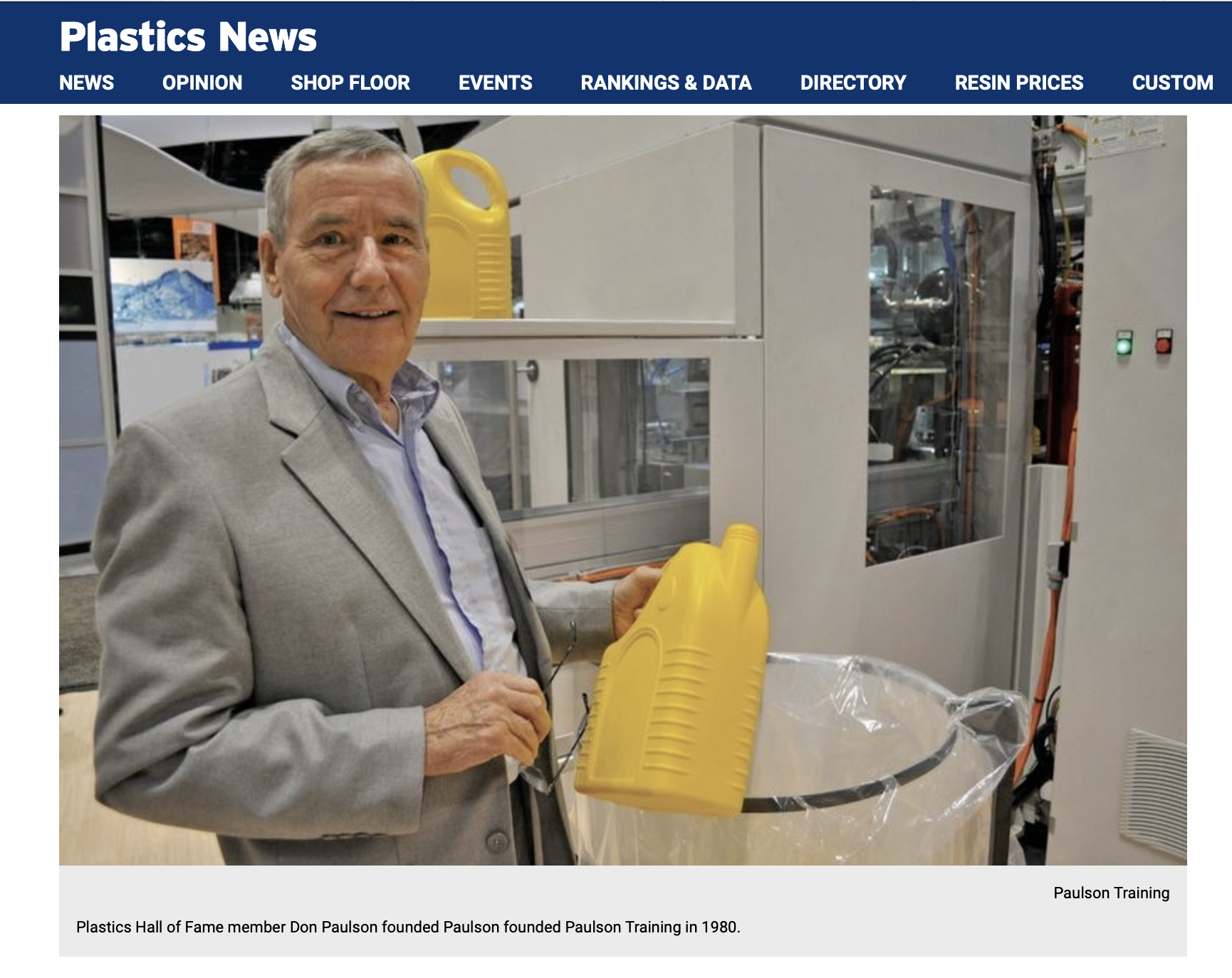 Today, we’re going to wrap up our step-by-step guide to successful training for injection molding plants.
Today, we’re going to wrap up our step-by-step guide to successful training for injection molding plants.
Although we call this part “Post-Training Procedures”, that is really a misnomer. Successful injection molding training doesn’t end. It is a continuous process that employees should be regularly encouraged to take. Paulson has quite a large library of training for injection molders. It would take at least a year, probably more, for an employee to go through our entire injection molding curriculum. At the end of that year though, watch out. You will have some top-notch molders out on the production floor.
That said, here’s a checklist for you to follow after an employee has finished one course (e.g. Injection Molded Part Problems and Solutions).
- Conduct a post-training Knowledge Assessment – This is a way for you to measure both knowledge and skill improvements on the production floor. We have a standardized on-line test that thousands of molders have taken. If you have your employees take our test, you’ll also be able to see how they stack up against the industry as a whole.
- Schedule additional training – If your employees react the way most of our customer’s employees do, they’ll want to press on with their training. Obviously not everyone will fall into this category, but for those that have the ambition, by all means get them going on more advanced training.
- Allow employees to repeat any training they want – People simply cannot retain 100% of what they learn the first time through any course. Regular “refresher” training sessions can only help. Plus, it keep enthusiasm up among your ambitious injection molding personnel.
- Measure, track, measure, track – If you followed the steps in Part 1 of the Implementing Injection Molding Checklist, you should have a baseline of production metrics before any training was done. Now is the time (but no sooner than 6 months after the start of your training) to gather that same injection molding production data and compare it to the “Before Training” data. If employees have applied what they’ve learned in the previous 6 months, you will see dramatic changes. At your discretion, you may want to post some or all of this data so employees can feel a part of something very positive in the company that they played a significant role in. If you don’t see significant improvement, we need to figure out why. Call Paulson to talk with an injection molding training specialist. It does neither of us any good if you don’t get the results that we see literally on a daily basis with our customers. We will get it fixed.
- Put training systems in place – every company should have systems in place to monitor on-going productivity numbers and employee assessment scores. You want to see a nice steady upward slope in all area’s (well, almost all… we’d like to see a steady downward slope in average cycle times).
That’s it. Once the training system is in place, it should pretty much run on autopilot. And that is the key. Make it a system – another piece of the production process. Too many companies treat injection molding knowledge and skills as a sideshow or one-time seminar type “event”. The fact of the matter is that training can actually be a leading role in your productivity and profits. Let your competition ignore molding knowledge at their peril.



